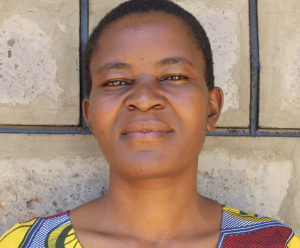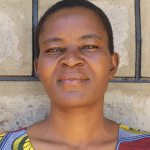Lwakhupa Primary School started in 1954 by community members who knew the importance of their children's education. Later, the catholic church took over and it is now the sponsor of the school. They started with a student enrollment of just 20 pupils, and the population has now increased to 2,140 pupils!
It was a hot and sunny afternoon during our first visit. We drove a motorbike to this rural, traditional area. People here live in mud houses with grass-thatched roofs. It is such a peaceful place because there is no industry being carried out nearby.
A normal day starts at 6:30 in the morning as pupils start arriving at the school. They find the teacher on duty who gives them instructions on their daily chores. They start by picking up rubbish around the compound and sweeping the classrooms. They attend a short study hall once they're done with their chores. Normal classes break for a long lunch so that students can leave school to find their meals.
Students study English, Swahili, mathematics, social studies, and science. However, their ability to learn is greatly disrupted by the fact that there is no clean drinking water on school grounds.
The area looks a bit like a water graveyard; old, leaky plastic water storage tanks donated to the school early on are no longer useful, and outside the school gate was the remainder of an old well installed in the 80's.
So, students have to go out into the community to find water. Their main source is a spring that was constructed by the community. It is not clean or maintained, and is severely overused.
Pupils waste a lot of time going to spring and coming back, since it is at least one kilometer each way. They are likely to suffer from waterborne diseases, and walking for a long distance each day for water is tiring.
"The pupils has suffered for so long," said Deputy Headteacher Godwill Masakha. "Walking every day to fetch water has affected their performance so much that it has forced some parents to transfer their pupils to nearby schools."
What we can do:
Training
The compound is clean but the school needs to improve on sanitation in other area. They need handwashing facilities and sufficient water to clean latrines and classrooms.
Training on good hygiene habits will be held for two days. The facilitator will use PHAST (participatory hygiene and sanitation transformation), ABCD (asset-based community development), CTC (child to child), lectures, group discussions, and handouts to teach health topics and ways to promote good practices within the school. The CTC method will prepare students to lead other students into healthy habits, as well as kickstart a CTC club for the school.
After visiting with teachers and students, we determined to address personal hygiene; leadership and management; handwashing; water handling; water treatment.
Handwashing Stations
This CTC club will oversee the new facilities, such as handwashing stations, and make sure they are kept clean and in working condition. The two handwashing stations will be delivered to the school, and the club will fill them with water on a daily basis and make sure there is always a cleaning agent such as soap or ash.
VIP Latrines
"We really urge you to help us add more latrines because the number of pupils is overwhelming and the ratio of pupil to toilet no longer exists," said staff member Godfrey Washali.
There are only five latrines for boys and eight for girls. Not having enough latrines for over 2,000 students forces students to wait in extremely long lines. Some younger students cannot manage the wait and need to look for a private place elsewhere.
Due to scarcity of water, the latrines are dirty and smelly. This has attracted flies, making the toilets uncomfortable to visit.
Two triple-door latrines will be constructed with local materials that the school will help gather. Three doors will serve the girls while the other three serve the boys. And with a new source of water on school grounds, students and staff should have enough to keep these new latrines clean.
Rainwater Catchment Tank
A 75,000-liter rainwater catchment tank will help alleviate the water crisis at this school. The school will also help gather the needed materials such as sand, rocks, and water from the spring for mixing cement. Once finished, this tank can begin catching rainfall that will be used by the school’s students and staff.
We and the school strongly believe that with this assistance, standards will significantly improve. These higher standards will translate to better academic performance!

 Rainwater Catchment
Rainwater Catchment
 Rehabilitation Project
Rehabilitation Project




































